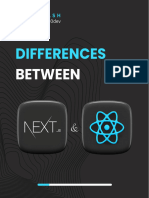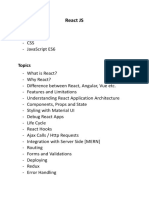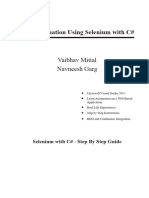v19.
LEARN REACT INSTALLATION
Creating a React App
If you want to build a new app or website with React, we recommend
starting with a framework.
If your app has constraints not well-served by existing frameworks, you prefer to
build your own framework, or you just want to learn the basics of a React app,
you can build a React app from scratch.
Full-stack frameworks
These recommended frameworks support all the features you need to deploy and
scale your app in production. They have integrated the latest React features and
take advantage of React’s architecture.
Note
Full-stack frameworks do not require a server.
All the frameworks on this page support client-side rendering (CSR),
single-page apps (SPA), and static-site generation (SSG). These apps can
be deployed to a CDN or static hosting service without a server.
Additionally, these frameworks allow you to add server-side rendering on
a per-route basis, when it makes sense for your use case.
This allows you to start with a client-only app, and if your needs change
later, you can opt-in to using server features on individual routes without
rewriting your app. See your framework’s documentation for configuring
the rendering strategy.
�Next.js (App Router)
Next.js’s App Router is a React framework that takes full advantage of React’s
architecture to enable full-stack React apps.
Terminal Copy
npx create-next-app@latest
Next.js is maintained by Vercel. You can deploy a Next.js app to any hosting
provider that supports Node.js or Docker containers, or to your own server.
Next.js also supports static export which doesn’t require a server.
React Router (v7)
React Router is the most popular routing library for React and can be paired
with Vite to create a full-stack React framework. It emphasizes standard Web
APIs and has several ready to deploy templates for various JavaScript runtimes
and platforms.
To create a new React Router framework project, run:
Terminal Copy
npx create-react-router@latest
React Router is maintained by Shopify.
Expo (for native apps)
Expo is a React framework that lets you create universal Android, iOS, and web
apps with truly native UIs. It provides an SDK for React Native that makes the
native parts easier to use. To create a new Expo project, run:
Terminal Copy
npx create-expo-app@latest
�If you’re new to Expo, check out the Expo tutorial.
Expo is maintained by Expo (the company). Building apps with Expo is free, and
you can submit them to the Google and Apple app stores without restrictions.
Expo additionally provides opt-in paid cloud services.
Other frameworks
There are other up-and-coming frameworks that are working towards our full
stack React vision:
TanStack Start (Beta): TanStack Start is a full-stack React framework
powered by TanStack Router. It provides a full-document SSR, streaming,
server functions, bundling, and more using tools like Nitro and Vite.
RedwoodJS: Redwood is a full stack React framework with lots of pre-
installed packages and configuration that makes it easy to build full-stack web
applications.
DEEP DIVE
Which features make up the React team’s full-stack
architecture vision?
Show Details
Start From Scratch
If your app has constraints not well-served by existing frameworks, you prefer to
build your own framework, or you just want to learn the basics of a React app,
there are other options available for starting a React project from scratch.
Starting from scratch gives you more flexibility, but does require that you make
choices on which tools to use for routing, data fetching, and other common
�usage patterns. It’s a lot like building your own framework, instead of using a
framework that already exists. The frameworks we recommend have built-in
solutions for these problems.
If you want to build your own solutions, see our guide to build a React app from
Scratch for instructions on how to set up a new React project starting with a
build tool like Vite, Parcel, or RSbuild.
If you’re a framework author interested in being included on this page, please let us
know.
PREVIOUS
Installation
NEXT
Build a React App from Scratch
Copyright © Meta Platforms, Inc
uwu?
Learn React API Reference
Quick Start React APIs
Installation React DOM APIs
Describing the UI
Adding Interactivity
Managing State
Escape Hatches
�Community More
Code of Conduct Blog
Meet the Team React Native
Docs Contributors Privacy
Acknowledgements Terms




















































































